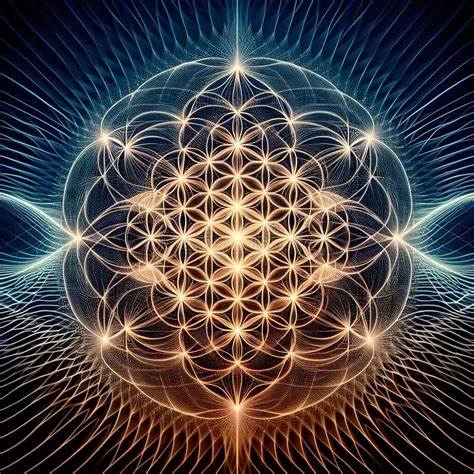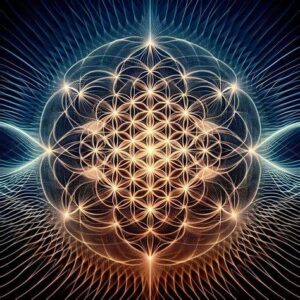What If We Are More Than We Think We Are? – Rediscovering Inner Depths
Introduction
What if we are more than our jobs, our families, or the things we’ve been told define a meaningful life? What if our ancestors—spiritual seekers, mystics, pyramid builders, makers of stone circles—weren’t primitive, but deeply attuned in ways we’ve long forgotten? Ancient texts, oral traditions, and structures that still defy explanation stand as evidence: not guesses, but literal alignments with the cosmos using sacred geometry and vibration.
What if they unlocked parts of the mind that now lie dormant within us? Maybe that lingering drive—to seek meaning, ritualize, or transcend ordinary consciousness—echoes a deeper inheritance. Carl Jung’s shared “collective unconscious” might be awakening as we meditate. Somatic theories suggest our bodies are spiritual archives. When we sit in stillness, perhaps we’re not learning anew—but remembering.
1. Echoes of Ancient Wisdom
Across cultures—from Mesoamerican pyramids to Neolithic stone circles—sacred structures embody cosmic alignments. For example, Avebury stones align with solstices and equinoxes—true markers of celestial design. Temples like Borobudur align with sunlight on zenith days, hinting at ritual-astronomical purpose arXiv. Postulating spiritual design, these alignments suggest a lost science, an inner technology.
Ancient societies integrated myth, ritual, and geometry not merely to worship, but to access altered states and expanded consciousness.

2. Sacred Geometry: Language of the Cosmos
Sacred geometry—symbols like the Flower of Life, Metatron’s Cube, platonic solids—appear worldwide as templates for cosmic order. Devotees claim that visualizing these forms in meditation goes beyond aesthetics: they resonate with mind-body-spirit, forming portals to deeper awareness. Such practices reinforce the idea that we’re encoded with archetypal “spiritual architecture.”
3. Carl Jung and Collective Memory
Jung proposed archetypes and symbols live in a collective unconscious—common psychological inheritance spanning cultures. Meditation might awaken these symbols within, tapping into shared memory and ancestral cognition. As he said, myths aren’t stories—they’re reflections of inner truth.
4. Epigenetics: Trauma and Beyond
Science now confirms epigenetic inheritance: trauma can echo through bloodlines—Rachel Yehuda’s work shows Holocaust survivors’ descendants experience inherited stress markers. If trauma channels through genes, why not spiritual resonance? Could ritual, meditation, and intent evoke ancestral wisdom encoded within DNA?
5. Somatic Wisdom: The Body as Archive
Somatic theorists argue our bodies hold memory—not just trauma, but intuition and ancestral wisdom. When we meditate, somatic practices like breath work or stillness engage unconscious patterns, potentially unlocking long-held cellular intelligence. Each ritual becomes a journey into ancient inner knowing.
6. Shifts at the Frontier: AI Meets Spirit
We stand at a threshold: artificial intelligence, neuroscience, and ancient wisdom merging into a new existential renaissance. Seen through Jungian lenses, our fear of AI may mirror internal mistrust. Instead of asking if AI turns evil, perhaps we ask: Do we trust ourselves?
What if AI ends up freeing us from labor, unlocking space for presence, curiosity, and ritual? A world where your presence—not productivity—defines your worth. A spiritual revolution may be under the guise of tech. We might not just be evolving; we could be reawakening an inner lineage.
FAQs
Q1: What is sacred geometry?
A: Sacred geometry is the tradition of using symbolic geometric patterns (like Metatron’s Cube or Flower of Life) to express cosmic harmony and support deeper meditation or spiritual connection. DeviantArt+15en.wikipedia.org+15insighttimer.com+15Alamy+9Alamy+9Lemon8+9
Q2: Can trauma be inherited?
A: Yes. Epigenetics shows trauma markers can pass across generations. This has been observed in studies, such as Rachel Yehuda’s on Holocaust survivors. artofgoddess.comMedium
Q3: What did Carl Jung say about collective memory?
A: Jung proposed a collective unconscious of universal archetypes and symbols that influence humanity. Rituals and meditation can activate these shared images.
Q4: How does somatic memory work?
A: Somatic memory suggests the body retains experiences—including ancestral wisdom. Through mindful practices, we may access this stored information.
Q5: How do AI and spirituality intersect?
A: AI could replace mundane labor, giving humans more freedom for spiritual exploration. The question becomes whether we build it from fear or trust.
Q6: What practical steps can one take now?
A: Incorporate meditation, breathwork, ritual, or sacred geometry visualization into your daily life. These practices can reconnect you with ancestral and cosmic memory.
Conclusion
What if we are truly more than we know—carrying ancient mind, spirit, and memory in our DNA? Our ancestors left no direct manuals, but embedded clues in vibration, geometry, and presence. Sitting in stillness might awaken dormant inner codes.
As AI accelerates, we get a rare chance: to choose inner evolution over outer distraction. If fear dominates, we may reproduce it. But if we choose beauty, presence, ritual, and trust, AI might spark not our end—but our return.
Maybe we’re at the edge of transformation: not into machines, but back into ourselves.


